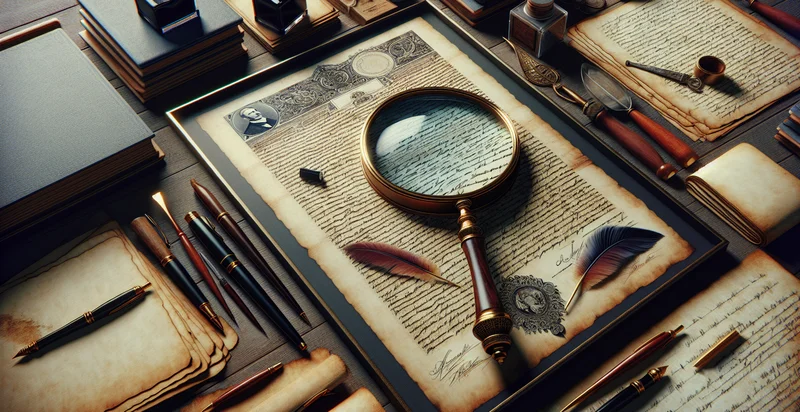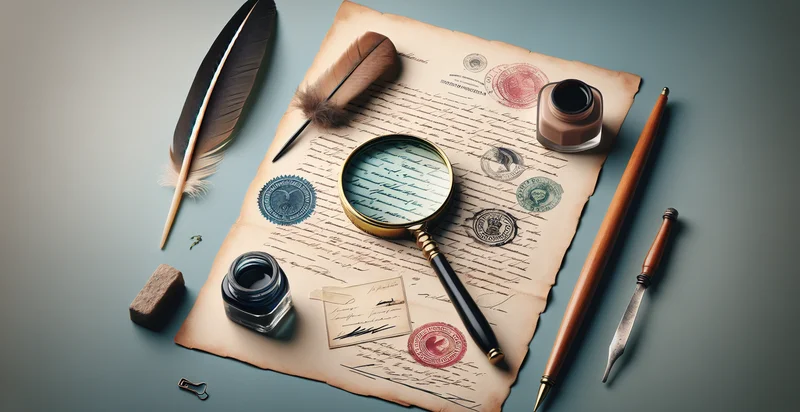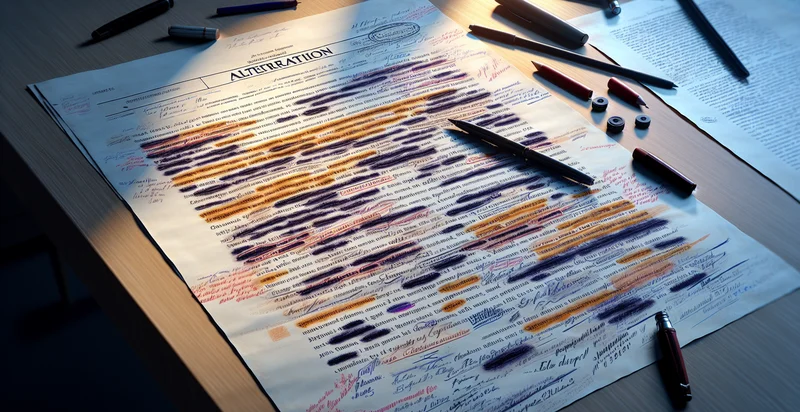Identify document age appearance
using AI
Below is a free classifier to identify document age appearance. Just upload your image, and our AI will predict the age of the document based on its appearance - in just seconds.


Contact us for API access
Or, use Nyckel to build highly-accurate custom classifiers in just minutes. No PhD required.
Get started
import nyckel
credentials = nyckel.Credentials("YOUR_CLIENT_ID", "YOUR_CLIENT_SECRET")
nyckel.invoke("document-age-appearance", "your_image_url", credentials)
fetch('https://www.nyckel.com/v1/functions/document-age-appearance/invoke', {
method: 'POST',
headers: {
'Authorization': 'Bearer ' + 'YOUR_BEARER_TOKEN',
'Content-Type': 'application/json',
},
body: JSON.stringify(
{"data": "your_image_url"}
)
})
.then(response => response.json())
.then(data => console.log(data));
curl -X POST \
-H "Content-Type: application/json" \
-H "Authorization: Bearer YOUR_BEARER_TOKEN" \
-d '{"data": "your_image_url"}' \
https://www.nyckel.com/v1/functions/document-age-appearance/invoke
How this classifier works
To start, upload your image. Our AI tool will then predict the age of the document based on its appearance.
This pretrained image model uses a Nyckel-created dataset and has 11 labels, including Aged, Antique, Damaged, Distressed, Faded, New, Slightly Used, Used, Vintage and Weathered.
We'll also show a confidence score (the higher the number, the more confident the AI model is around the age of the document based on its appearance).
Whether you're just curious or building document age appearance detection into your application, we hope our classifier proves helpful.
Related Classifiers
Need to identify document age appearance at scale?
Get API or Zapier access to this classifier for free. It's perfect for:
- Historical Document Verification: Museums and archives can use the document age appearance identifier to authenticate historical documents before acquisition or exhibition. By analyzing the visual characteristics that indicate the document's age, the system can help curators determine if items are genuinely from the claimed era or if they are modern reproductions.
- Fraud Detection in Legal Documents: Law firms could implement the identifier to assess the authenticity of contracts and agreements. By identifying whether documents appear to be older or more recent than they claim, the system helps mitigate risks associated with document forgery and ensures legal compliance.
- Compliance in Financial Reporting: Financial institutions can use the identifier to verify documentation submitted for compliance purposes, such as loan applications and financial records. The function can flag inconsistencies in the apparent age of documents, prompting further investigation to prevent fraud.
- Academic Research Verification: Academic institutions and researchers can leverage the identifier to verify the authenticity of research papers and historical data sources. By identifying discrepancies in document age, they can ascertain the validity of cited materials, thus maintaining academic integrity.
- Insurance Claim Validation: Insurance companies can utilize the identifier to evaluate submitted documents related to claims. By assessing the apparent age of supporting documents, insurers can reduce the chances of fraudulent claims based on altered or faked documentation.
- Art Authentication: Art dealers and collectors can adopt the identifier to assess the age and authenticity of provenance documents associated with art pieces. This use case can enhance buyer confidence and facilitate smoother transactions by establishing the legitimacy of artworks’ histories.
- Digital Asset Management: Organizations managing digital assets can employ the identifier to maintain the integrity of their document archives. By verifying the apparent age of documents within their system, businesses can ensure proper categorization and organization of documents, aiding in better retrieval and compliance with retention policies.


